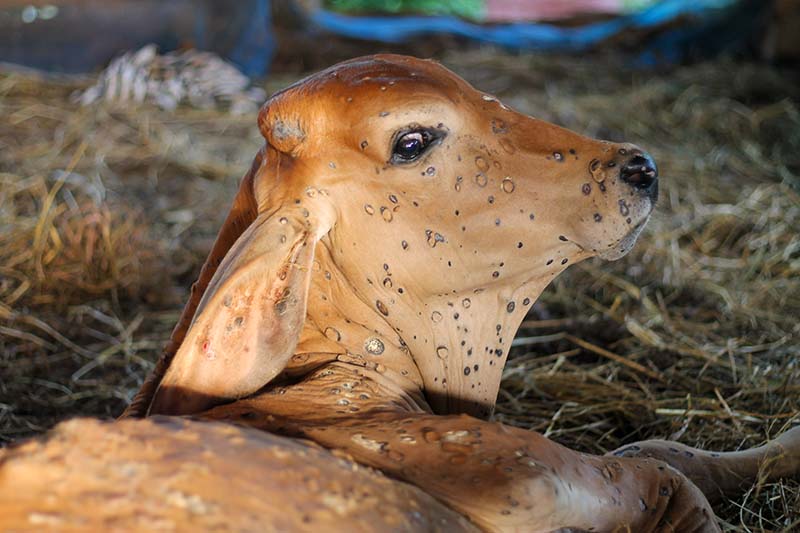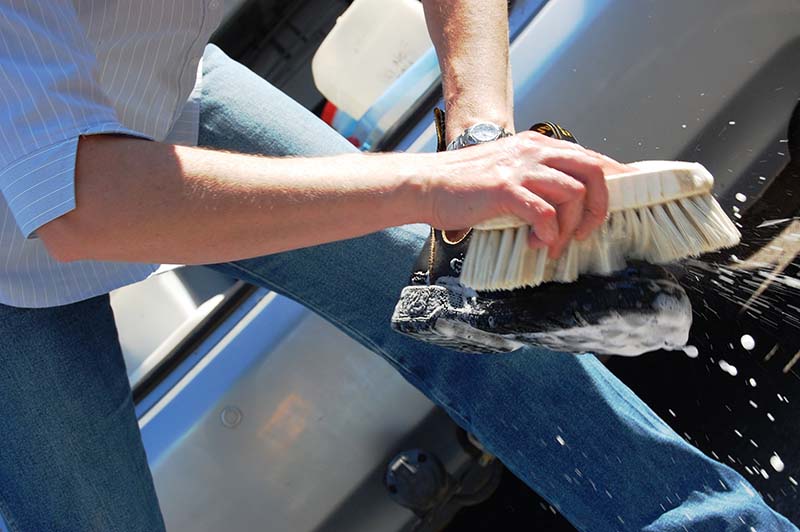Biosecurity courses
Accessing courses
To access courses, you will need to create an account. This will allow you full access to the courses and it will track your progress as you move through them.
For assistance with creating an account on the Learning Management System please email us.
Developing an on-farm biosecurity plan for livestock producers
 Biosecurity planning is not a one-size-fits-all process. Every farm and property are different with each facing a unique set of challenges and risks.
Biosecurity planning is not a one-size-fits-all process. Every farm and property are different with each facing a unique set of challenges and risks.
This online module is designed to provide you with information to understand the importance of biosecurity and how you can apply key biosecurity principles to your farm.
This course will take approximately 15 minutes.
View Developing an on-farm biosecurity plan for livestock producers online courseWorking in an Emergency Animal Disease (EAD) Response – Foundational learning
 This short course provides an introduction to the concepts of working in an emergency response, biosecurity hygiene and two priority Emergency Animal Diseases (EAD); Foot-and-mouth disease and Lumpy skin disease.
This short course provides an introduction to the concepts of working in an emergency response, biosecurity hygiene and two priority Emergency Animal Diseases (EAD); Foot-and-mouth disease and Lumpy skin disease.
The training does not take long and can be broken up to fit in with busy schedules. At the end you will have a greater appreciation for the importance of a rapid, structured and effective response. Once you have completed all required elements, you will be able to print a Certificate of Achievement
View Working in an EAD Response – Foundational learning online courseLivestock Standstill for Foot-and-Mouth Disease
 In the event of foot-and-mouth disease being confirmed or strongly suspected anywhere in Australia, authorities will implement state-based movement restrictions.
In the event of foot-and-mouth disease being confirmed or strongly suspected anywhere in Australia, authorities will implement state-based movement restrictions.
This online module is designed to give an overview of what happens in the event of a livestock standstill.
If a livestock standstill is announced, everyone must follow the rules. Penalties for breaching movement restrictions will apply.
This course will take approximately 15 minutes.
View Livestock Standstill Foot-and-mouth Disease online courseFoot-and-mouth Disease Awareness
 Foot-and-mouth disease (FMD) is considered one of Australia’s greatest biosecurity risks.
Foot-and-mouth disease (FMD) is considered one of Australia’s greatest biosecurity risks.
This online module is designed to give an overview of the risk and impact foot-and-mouth disease can have on the farming industry and what is being done to reduce that risk.
This course will take approximately 15 minutes.
View Foot-and-mouth Disease Awareness online courseLumpy Skin Disease Awareness
 Lumpy skin disease is a viral disease of cattle, buffalo and wild ruminants that can result in animal welfare issues and significant production losses.
Lumpy skin disease is a viral disease of cattle, buffalo and wild ruminants that can result in animal welfare issues and significant production losses.
This online module is designed to give an overview of the risk and impact that lumpy skin disease can have on the farming industry, and what is being done to reduce that risk.
This course will take approximately 15 minutes.
View Lumpy Skin Disease Awareness online courseCome Clean, Stay Clean, Go Clean - when visiting farms
 This course will provide you with information to know what to do to visit farms in a safe manner. You can help protect Australia's farms.
This course will provide you with information to know what to do to visit farms in a safe manner. You can help protect Australia's farms.
All people, vehicles and equipment visiting farms can spread pests, diseases and weeds.
Good biosecurity is about awareness and action. Know what you have to do to visit farms in a safe manner and how to keep everything clean while you are there.
Know how to identify signs of pests, diseases, or weeds and know how to report anything unusual you may see on your visit.
This course will take approximately 15 minutes.
View Come Clean, Stay Clean, Go Clean - when visiting farms online courseGiant Pine Scale
 Have you found white cotton wool-like material on a pine tree? You may have found giant pine scale. The problem with giant pine scale is that they eventually kill the trees they live on. To learn more about what you can do about it, view this online course.
Have you found white cotton wool-like material on a pine tree? You may have found giant pine scale. The problem with giant pine scale is that they eventually kill the trees they live on. To learn more about what you can do about it, view this online course.
If you find giant pine scale on a pine, spruce or fir tree outside of Melbourne’s south-east, report it to Agriculture Victoria:
- phone the Customer Service Centre on 136 186
- email photos of the suspected pest, together with a contact phone number and the pest’s location to plant.protection@agriculture.vic.gov.au
Managing Chestnut Blight
 This course has been developed by Agriculture Victoria and Chestnuts Australia Incorporated to help growers look for and manage chestnut blight, a disease which poses a serious threat to Australia's chestnut industry.
This course has been developed by Agriculture Victoria and Chestnuts Australia Incorporated to help growers look for and manage chestnut blight, a disease which poses a serious threat to Australia's chestnut industry.
Chestnut blight is a declared exotic plant disease in Victoria. This course has been developed to comply with the Victorian Plant Biosecurity Act 2010.
If you are located outside of Victoria and suspect that you have detected chestnut blight, report it to the Exotic Plant Pest Hotline on 1800 084 881.
View Managing Chestnut Blight online courseAustralian Plague Locust
This short course has been developed to assist Victorian landholders and public land managers in identifying, reporting and managing Australian plague locusts on their land. This course will take approximately 20 minutes to complete.
The course covers:
- The importance of controlling locusts
- How to identify locusts
- The Australian Plague Locust lifecycle and behaviour
- Migration, swarms and outbreaks
- How to report an Australian Plague Locust
- Managing locusts
- Important information for landholders and key industries.
Top five exotic pests and diseases for Victorian grains industry
 An exotic pest or disease is one that does not naturally occur in the area and has been brought in accidentally or intentionally.
An exotic pest or disease is one that does not naturally occur in the area and has been brought in accidentally or intentionally.
In this course we will consider the risk of an exotic pest or disease to cereal, pulse and oil seed crops on your property/to your client's property, not of it entering Australia. Therefore, providing some thoughts on how you can mitigate the risks you can control.
This course will also consider how a future climate may increase or decrease the risk of an exotic pest or disease on your/client's property.
View Top five exotic pests and diseases online course
Further information
For help with the Agriculture Victoria Learning Management System please contact learning@agriculture.vic.gov.au